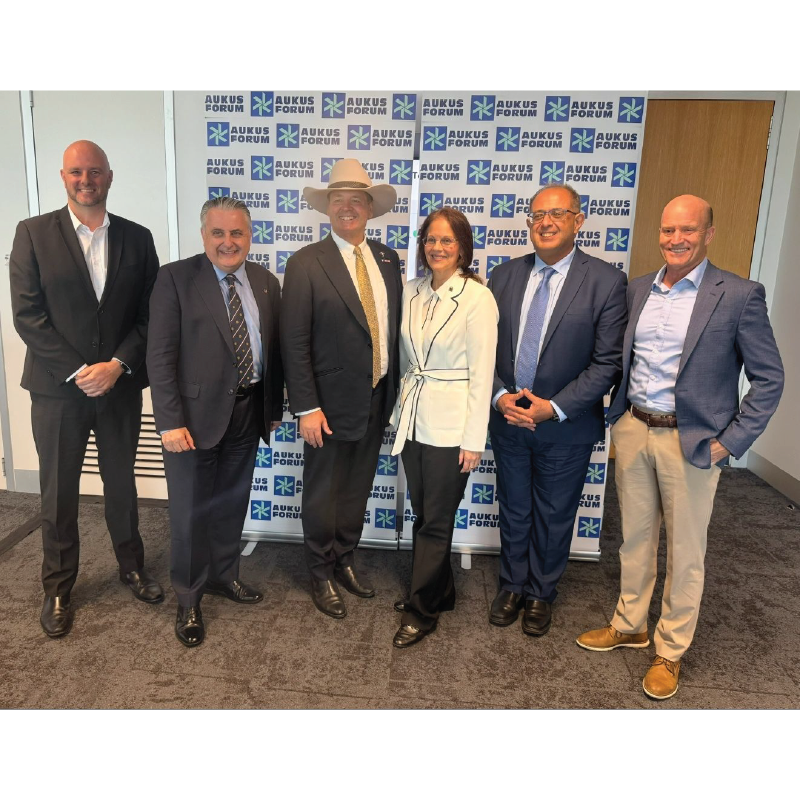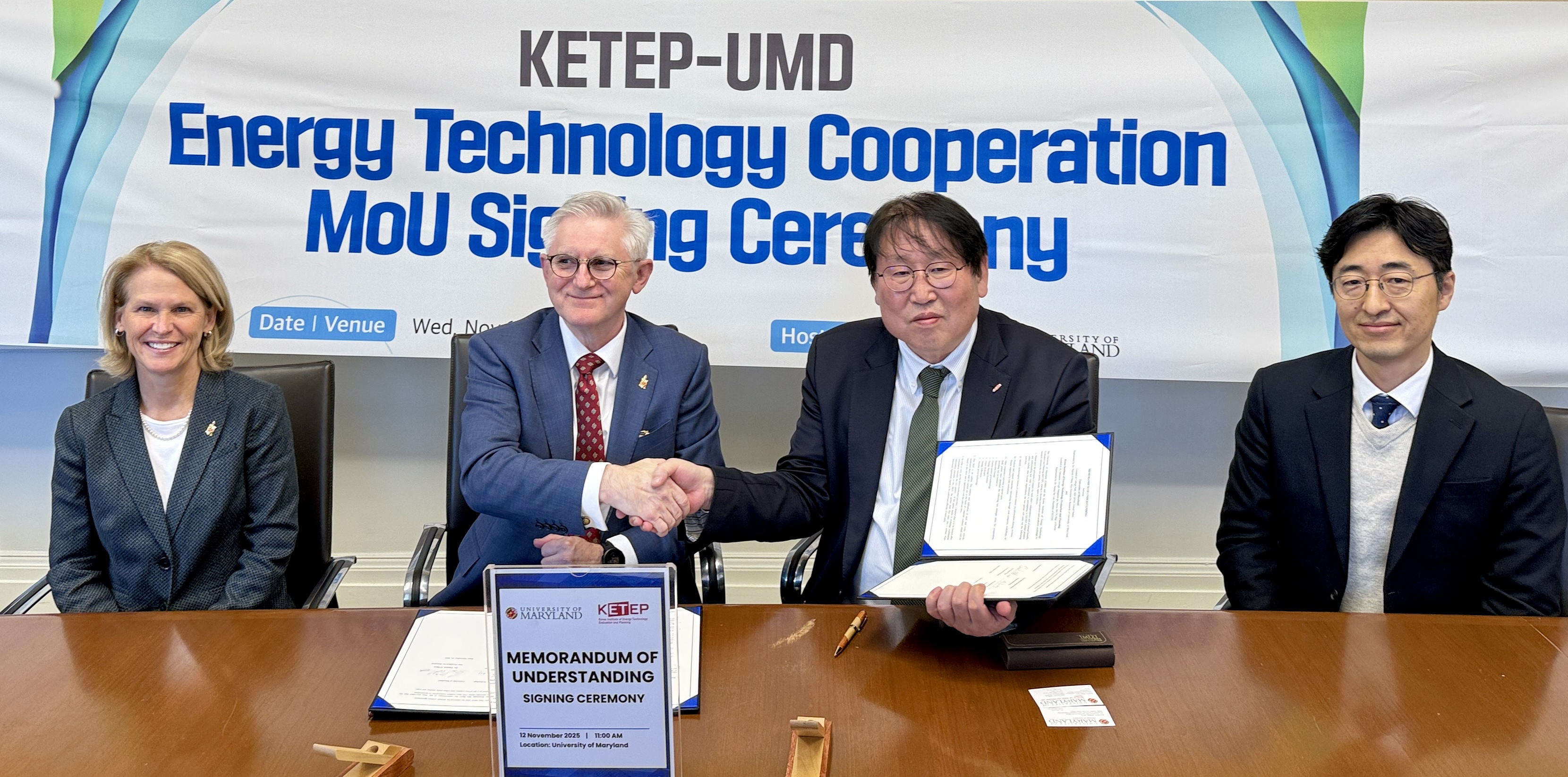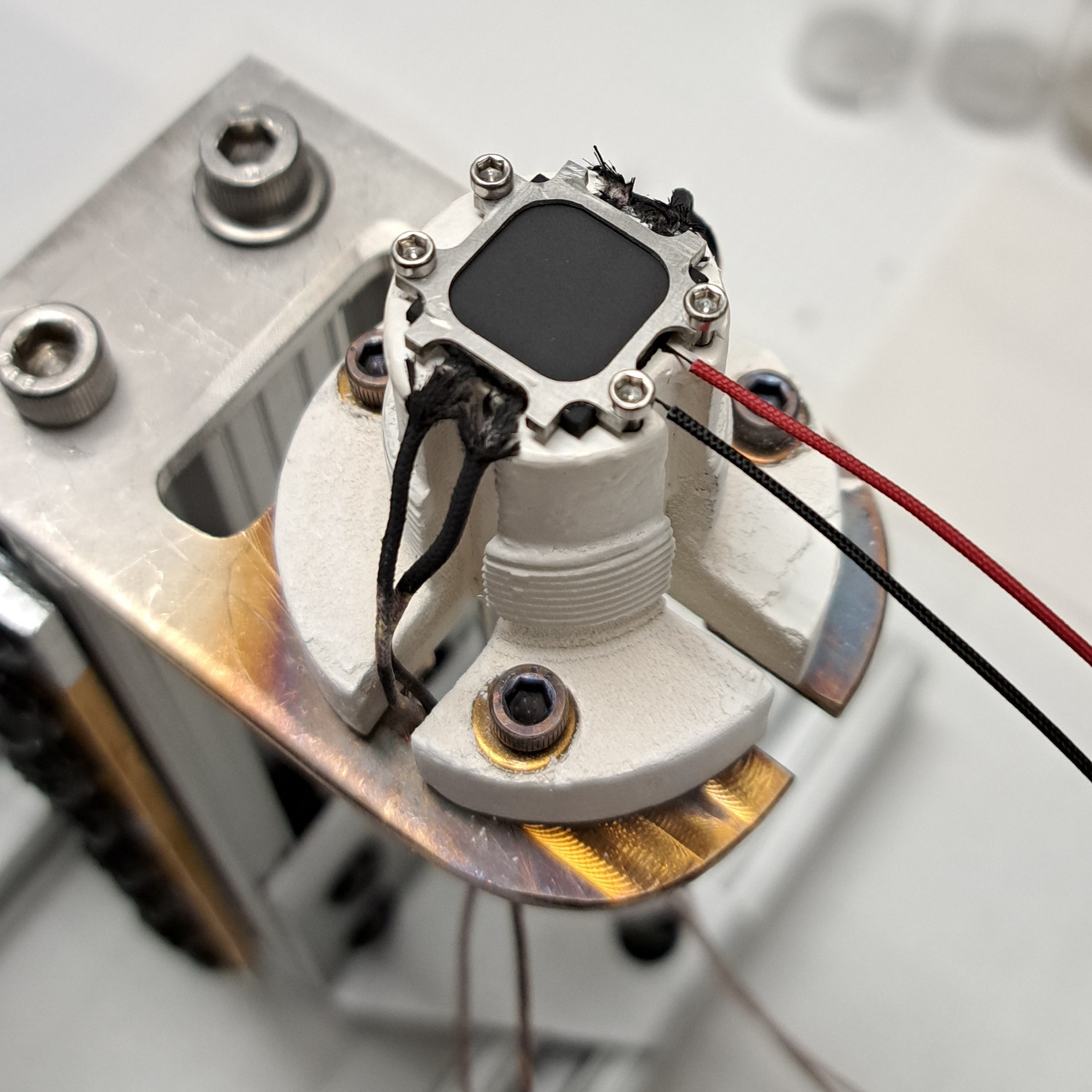News Story
The Chemical and Biomolecular Engineering Team Wins the 2023 Alumni Cup Competition

ChBE winning team posting with the department’s chair, professor Peter Kofinas
The Chemical and Biomolecular Engineering team won the day in the Alumni Cup Competition for the J. Clark Engineering School students of the University of Maryland. As one of the school’s prestigious student engineering awards, the winner was announced Friday, February 24, at the rotunda of the Jeong H. Kim Engineering Building after a competition involving the school’s eight engineering departments.
The annual Alumni Cup Competition, which was first held in 2012, recognizes creatively designed Rube Goldberg-inspired machines that operate predictably and comply with all established rules, promote teamwork and allow students to apply their creativity and practical design knowledge. The additional qualifying factor of this year’s competition was for the Testudo statute to be moved more than two and a half meters across the Mckeldin Mall.
After two rounds of the students exhibiting their projects, the judges selected three finalists, and the cup was handed to the team in the first position.
The Chemical and Biomolecular Engineering team earned first place for designing a device that produces clean energy from hydroelectric and solar power. The mechanism involved a sea saw-like mechanism that triggered a solar power domino which released hydroelectric energy.
The Mechanical Engineering team took second, and the Aerospace Engineering team came third. The other competing teams were:
- Fischell Department of Engineering,
- Material Science and Engineering
- Fire Protection Engineering
- Civil and Environmental Engineering
- Electrical and Computer Engineering
Before the competition, the engineering students worked in teams for two weeks with just a $100 financial allocation to develop their designs. As the teams dazzled the audience with their ingenuity and creativity, cheers of support echoed when they showcased their devices.
“The competition among the teams met all the expectations, said Samuel Graham Jr., the dean of the J. Clarke School of Engineering, in an interview. “They bring their engineering skills and are creative and know how to work as a team, promoting healthy competition”. Asked whether he had any advice for future engineering students, Samuel Graham Jr. encouraged prospective engineering students to identify their passions, study engineering science fundamentals, such as mathematics, chemistry and other sciences, and apply the knowledge and learn from others. He said they should seek the support of mentors who could guide them in areas of engineering science they may not be familiar with, noting that it would require understanding the techniques to address the problems confronting the real world.
Many participants agreed that the competition was necessary for recognizing the critical role of engineering in addressing the challenges facing societies worldwide, which Samuel Graham, Jr., acknowledged during an interview as essential in “solving the multiple problems we have”.
The importance of engineering science is evident in the broad areas the students addressed, including energy, transportation, climate change, disaster mitigation, environmental protection and natural resource management. The J. Clark School of Engineering provides the academic environment that mobilizes the engineering community to deliver the basic services that benefit society effectively.
“The event is amazing, and the student got involved in a project that could impact the nation and world,” said Lyndon Brown, one of J. Clark School of Engineering’s alumni, who served on the panel of judges. “There was a lot of creativity with the solutions and teamwork and collaboration, all of which were required to be successful,” he said of the teams. Lyndon Brown lauded the effort of the Alumni Association for organizing the event.
Becca Gibbons, a department of Chemical and Biomolecular Engineering student and a teammate in the exhibition, praised the team's effort in designing their solar-sensor device system. She acknowledged her team's dedication to getting the Testudo to move three out of the twenty steps and wished they receive bonus points.
Among the presentations that followed, the Chemical and Biomolecular Engineering team worked on a resilient energy solution to provide clean, sustainable, renewable energy. Their focus on solar and hydropower is a promising form of renewable energy required to help reduce carbon emissions and combat climate change.
The Material Engineering Science team worked on a system that took the form of a new building, designed to achieve a Testudo that could move through multiple disciplines of material science, navigating around dangerous construction paths before reaching its target.
The Fire Protection team presented a technology that moved the Testudo around under fire scenarios and the response mechanisms to address it.
The competition was sponsored by the Engineering Alumni Network with the support of Bechtel and Gore among others.
Congratulations to the winner, two runners-up and five other runners in the competition.
Published February 27, 2023









